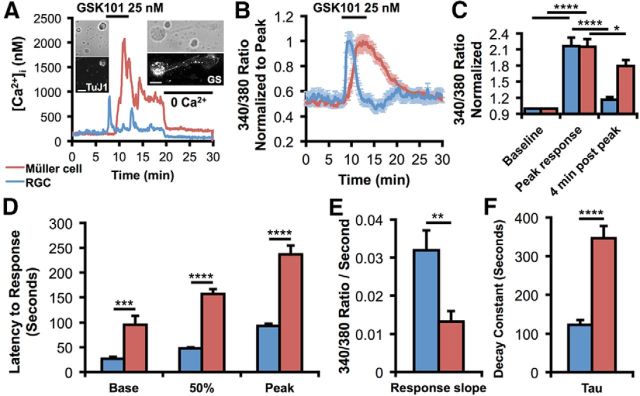Figure 4.
TRPV4 response kinetics differ in RGCs and Müller glia. A, Representative raw traces of calibrated GSK101-induced responses in a concurrently recorded RGC and Muller cell show a short-latency transient [Ca2+]i elevation in the RGC and a sustained [Ca2+]i response in the glial cell. Ca2+-free saline suppressed the sustained response component and decreased the [Ca2+]i baseline in the RGC. After the recording, the two cells were immunolabeled for TuJ1 and GS, respectively. B, Normalized fura-5F fluorescence from a GSK101-stimulated cohort of RGCs and glia (n = 25 Müller glia and 51 RGCs). Responses to GSK101 are fast and transient, whereas Müller cells exhibit delayed and sustained TRPV4 activation. C, GSK101 significantly increased calcium levels in both cell types; however, RGC calcium levels returned closer to baseline levels 4 min after the response peak in the continued presence of GSK101. D, The latency to the base (n = 17 Müller glia and 19 RGCs), 50% amplitude, and peak response (n = 21 Müller glia and 24 RGCs) was longer in Müller cells. E, F, The rate of TRPV4 activation (E; n = 20 Müller glia and 19 RGCs) and inactivation (F; n = 20 for each) was faster in RGCs. *p < 0.05. **p < 0.01. ***p < 0.001. ****p < 0.0001.

